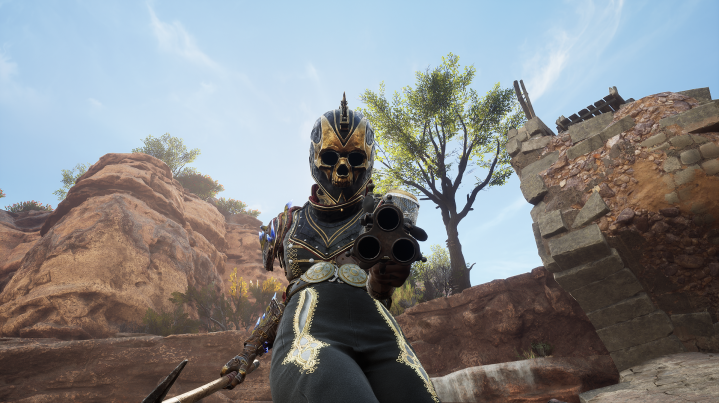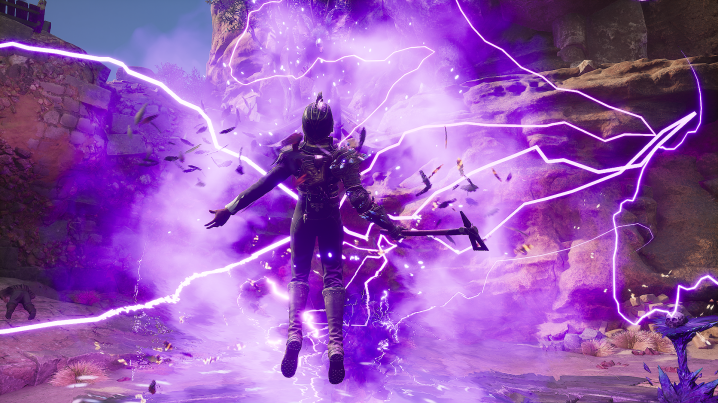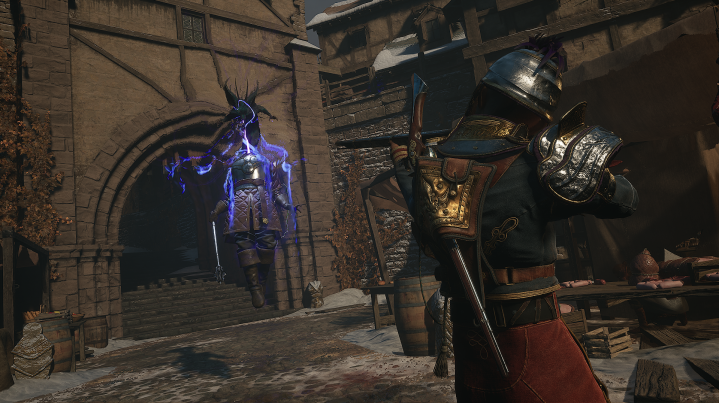
If you follow video games, you probably know what a “Soulslike” is at this point. The term, used to describe action RPGs that draw heavy inspiration from punishing titles like Dark Souls, has spawned a popular subgenre whose influence can be seen in games big and small. Now, we may be getting a new mutation of that genre thanks to Flintlock: The Siege of Dawn.
Get ready for the Soulslite.
The term popped up at GDC 2024, where developer A44 Games gave me a deep look at Flintlock: The Siege of Dawn. The hands-off demo featured many aspects you’d expect to see in any FromSoftware-inspired game. I saw challenging combat, lots of parrying, and a multi-armed boss wielding a few too many swords at once. But A44 Games isn’t trying to scare off players who find the challenging genre too intimidating. That’s where the Soulslite branding comes in.
The birth of the Soulslite
Flintlock: The Siege of Dawn is an wide-linear action RPG in which hero Nor Vanek is on a quest to take down an army of the dead and some Gods. She sets out on that quest with an axe in one hand and a pistol in the other. Bloodborne comes to mind as I start to see the combat in action, as Nor uses her pistol to interrupt winding attacks in between heavy axe slices. But the differences start to add up fast.
What immediately stands out is that I’m not looking at a dark and dreary world like I’ve come to expect in titles like The Lords of the Fallen. Instead, I’m often looking at sun-soaked deserts and lively towns. Even combat is flashy and colorful, with splashes of vibrant magic painting the environment. A developer on hand noted that the New Zealand-inspired art style was a conscious choice to help Flintlock better stand out in a dark and crowded genre.

That lightness isn’t just present in the art, but in combat too. While Flintlock still has all the basics of the Soulslike genre, its pacing seems much closer to a traditional action RPG. Fights are faster and more furious. That’s largely thanks to its most eye-catching feature: its cinematic glory kills.
As players battle, they build up energy on a bar. When that’s filled, it can be spent to strip a bit of armor off an enemy. If they have no armor left, that action becomes a brutal finishing maneuver that almost seems indebted to those in the Batman Arkham series. I’d see tons of those during my demo as Nor flung enemies to the ground and blasted them to pieces or stylishly cut them down with her ax. The camera moves a bit to emphasize that action, momentarily swooping to catch it at a creative angle before returning to its standard third-person position. That makes fights feel more fluid and dynamic than your typical Souls game.
That’s further emphasized by a combo system, something that really makes Flintlock feel like a quicker action game. Reputation is the main currency here and it is earned by defeating enemies — and dropped when Nor dies. Rather than just giving players a chunk of Reputation when they kill an enemy, a greater amount is doled out through a combo meter. Using more unique moves will raise that multiplier, encouraging players to use their entire toolset rather than spamming one attack. It’s a smart bit of risk-reward design that seems like it’ll keep players pressing the advantage rather than cowering from enemies.

When discussing how its combat differs from other Soulslike games, a developer from A44 Games uses a dancing analogy. He notes that enemies tend to “lead the dance” in a game like Dark Souls. They set the pace, and players have to react to their attacks. Flintlock reverses that, putting players in the lead position. Between slashing, shooting, and commanding Nor’s mystical pal Enki, who can help out in battle, players have a lot of ways to take charge.
That idea has me far more intrigued by Flintlock than many of its contemporaries. Based on what I’ve seen, it’s looking like an action RPG for those who want the challenge of Dark Souls but the fast pace of something like Final Fantasy VII Rebirth. It doesn’t look like it’s pulling any punches either; I watched a massive boss slash the demoist into pieces with a relentless onslaught of strikes. It may be a “Soulslite,” but it’ll still wipe the floor with you if you’re not careful.
Flintlock: The Siege of Dawn is set to launch this summer on PS5, Xbox Series X/S, and PC.



